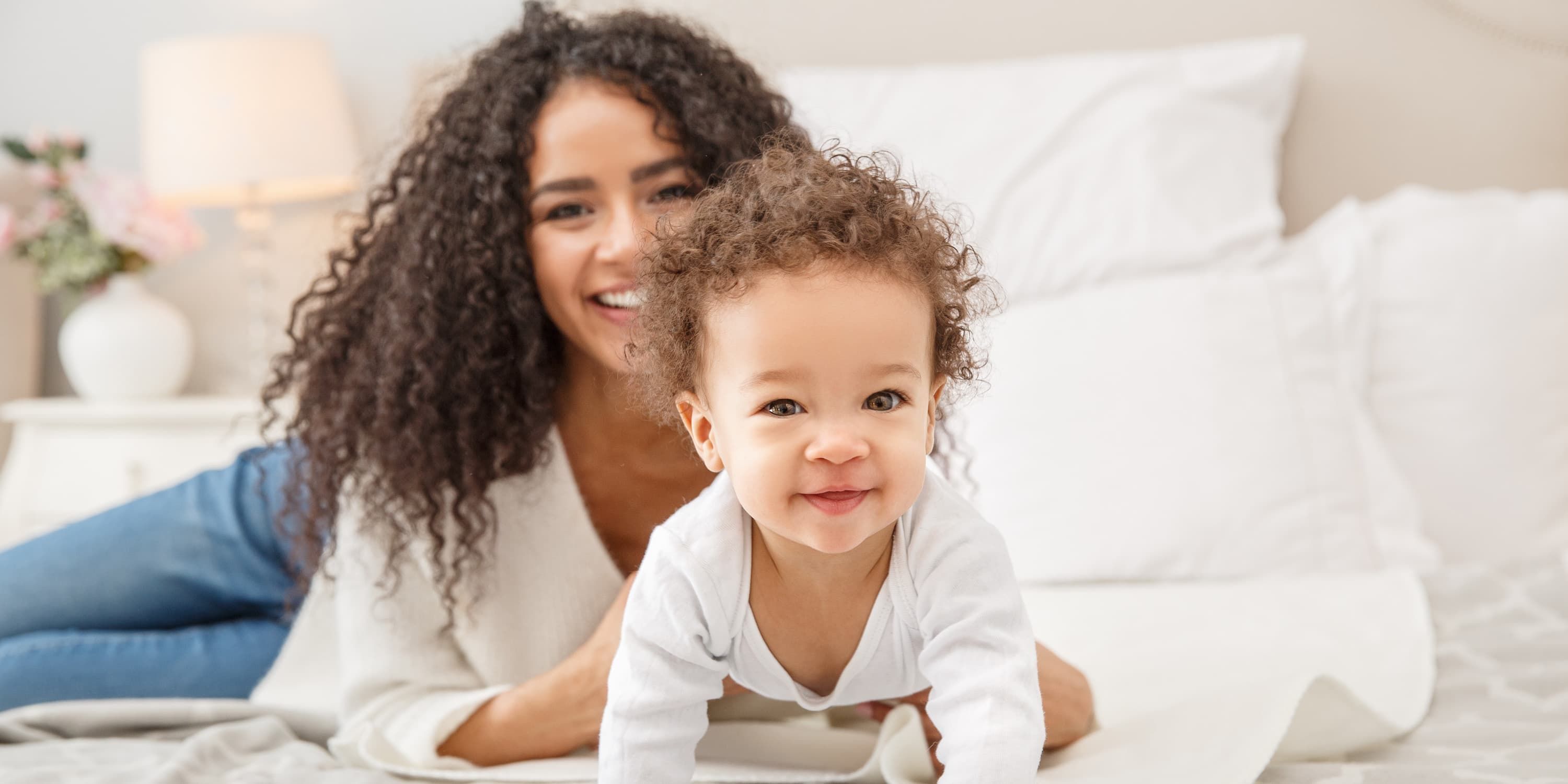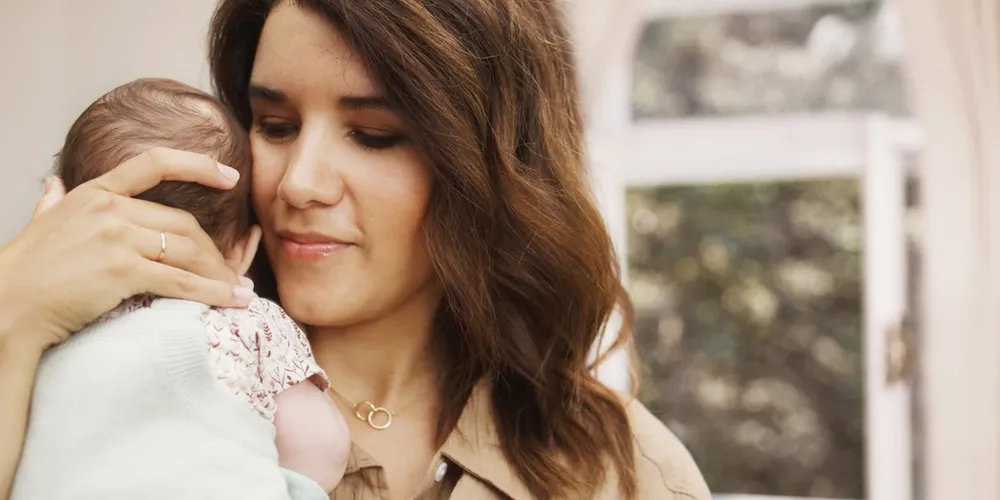For parents, it is especially exciting to observe how their little one changes and grows over time. After starting with a few vital reflexes and skills, babies learn amazingly quickly. Let's take a closer look at the impressive progress you can expect to see as a parent during the first six months!
Innate reflexes at birth
- Sucking reflex: newborns can start trying to feed shortly after birth.
- The swallowing and coughing reflex provides for vital physical reactions that are essential when breastfeeding or to expel foreign objects.
- Moro or startle reflex: when laid on their backs suddenly or startled, newborn babies sometimes reach their arms out wide and spread their fingers. This reflex is important in humans because it allows for the first breath and supports the opening of the windpipe.
- The palmar grasp reflex allowed our ancestors to hold on tight to their mother. Today, it is seen when babies firmly clasp hold of objects (or fingers) when pressure is applied to the palm of the hand.
Vision
The eyes are fully developed at birth. However, the areas of the brain required to process the images are not yet sufficiently developed, which is why newborns can only see faces and objects clearly at a distance of about 7-10 inches.
At 3-5 months, children can recognize facial expressions and perceive happiness, sadness, and surprise. Spatial vision works just as well as sharp distance vision now.
Hearing
Newborns hear similarly to adults, only a little more attenuated. The voices of parents and siblings are already familiar from the time spent inside the womb.
At about 2 months of age, the child begins to turn to interesting sources of noise. Because hearing is crucial for speech development, it is usually checked by a doctor.
Smell
The sense of smell is very well-developed right from the start and allows babies to find the breast and begin nursing right after birth. Babies can also identify their mother's own physical scent. The nose is still quite "untainted" – if your baby is sensitive to perfume, it is better to avoid it at first.
Motor development
During the first 6 months, babies develop from a bent to a stretched posture. Initially, babies still pull their arms and legs tightly in. Later the extremities and the body straighten out into an upright position.
At about 2 months of age, a baby should be able to hold their head in line with their body.
Standing is initially only possible as a reflex: the infant stretches its legs firmly and appears to stand. But this does not last long. At around 6 months, development towards independent standing begins and the weight is borne by the child itself when held in a standing position.
From the 4th month on, it can happen at any time: the baby rolls onto its tummy unassisted. This is why it is particularly important never to leave the baby lying on a changing table alone!
Baby’s fine motor skills also develop first. During the early months, the hands are still clenched in fists and the child is not yet able to hold objects. Only the grasping reflex causes the baby to clasp fingers, for example. Initially, both hands are used to grip and the whole hand is required. At around 6 months of age, most children can pass an object from one hand to the other.

Mental development
At around 6-8 weeks, babies smile genuinely for the first time. A major milestone – especially for the parents!
At 4 months, many infants begin to "babble". Different ways of crying have also developed – for hunger, tiredness, and pain, for example. Your baby probably recognizes familiar people now.
The first "development aid"
- Alternating between lying on the stomach, on the back, or in a baby bouncer that fits the body and playing with baby’s hands and feet can help support the development of different muscles.
- Affectionate physical contact at bath time and when changing diapers also supports healthy development.
- The movements that occur when transported in a baby carrier or sling promote different sensory perceptions, serve as early experiences of movement and help promote bonding with the parents.
- Stimulating toys are also available for little ones. MAM Friends toys are ideal for getting started, because the material is pleasantly soft and made of 100% natural rubber, while the bright colors and different shapes aid in the development of the senses.
Baby Development – not a competition
Development steps differ greatly between individuals. Tables listing what a baby should be able to do and when are intended as a rough guide and are not a compulsory schedule – every child is different and may fall on a different timeline!
If you are genuinely concerned about a developmental delay, it is best to seek advice from a pediatric clinic.
Photos: Shutterstock
Sources: Babyjahre, Remo H. Largo, Piper Verlag, Munich/Berlin, new edition 2017; Quickfinder Babys erstes Jahr, Silvia Höfer, Gräfe und Unzer Verlag, 2009, p. 74




























